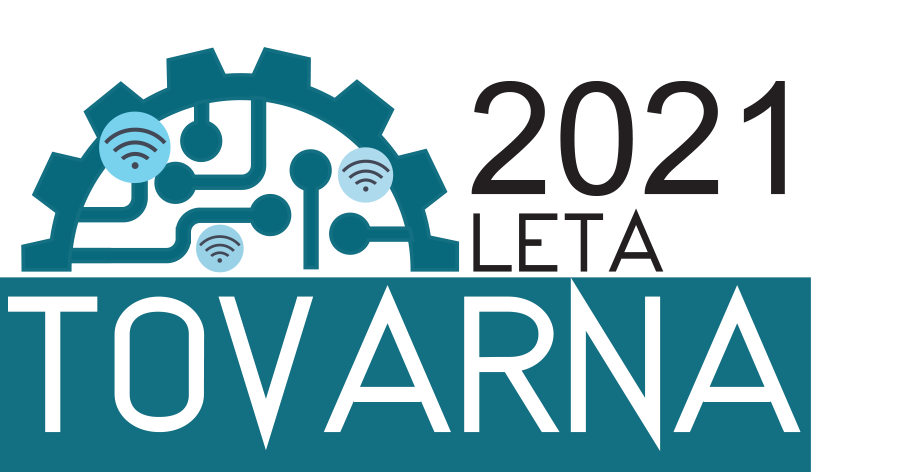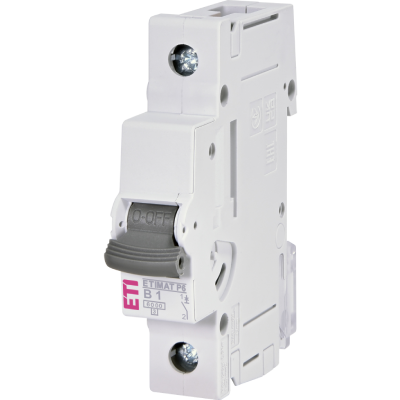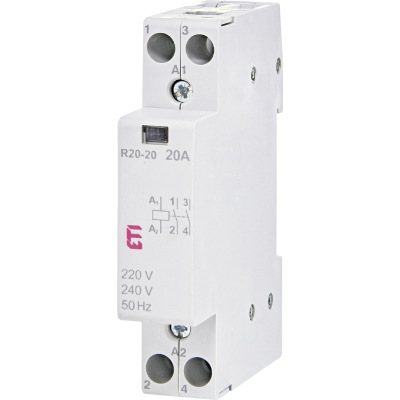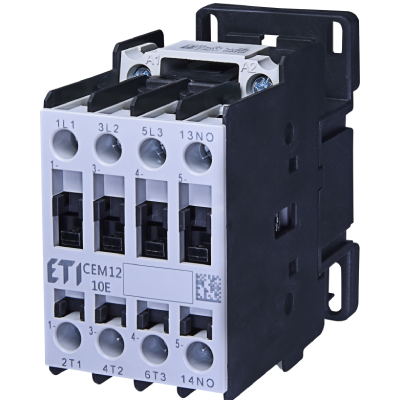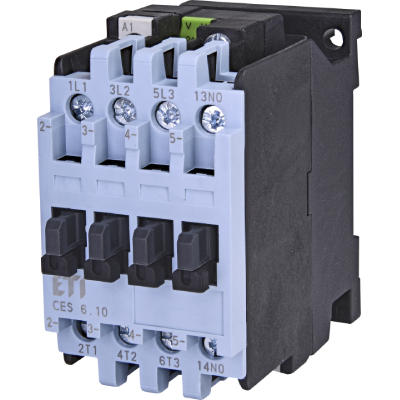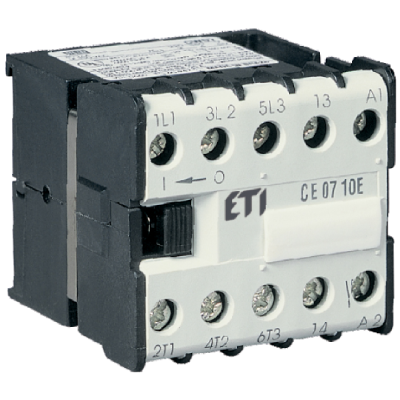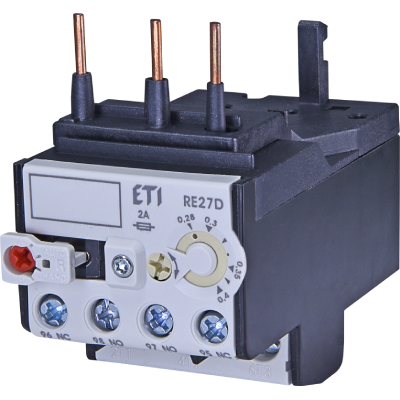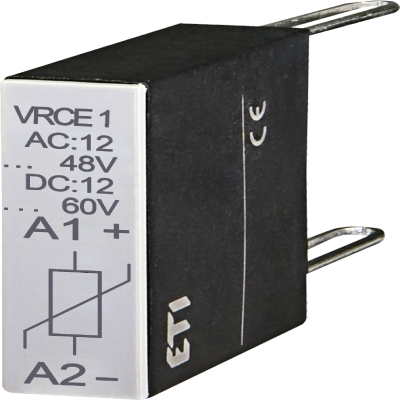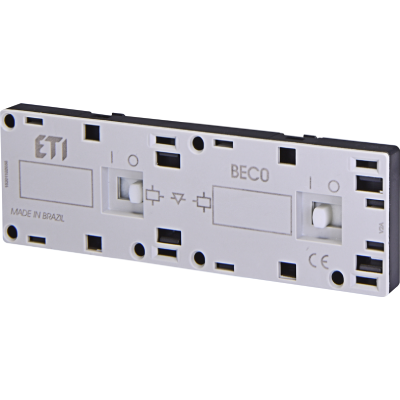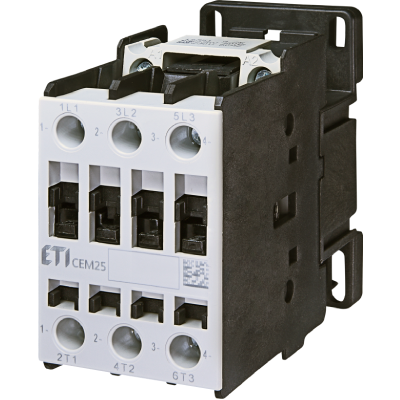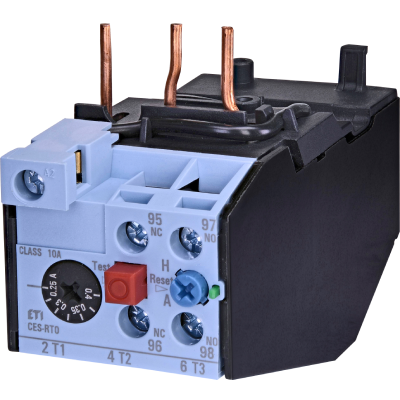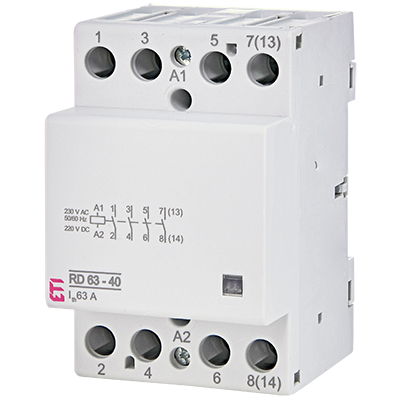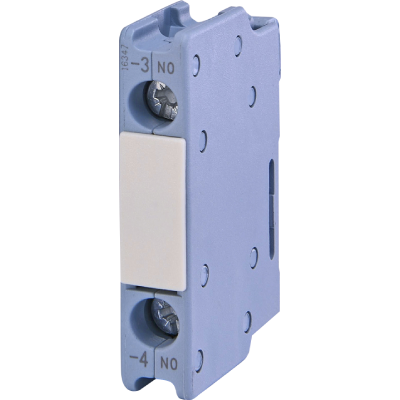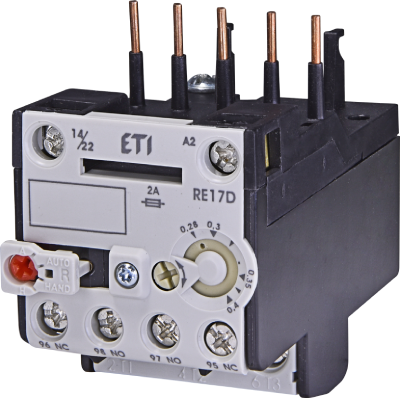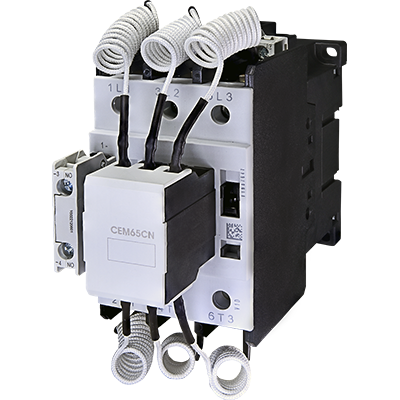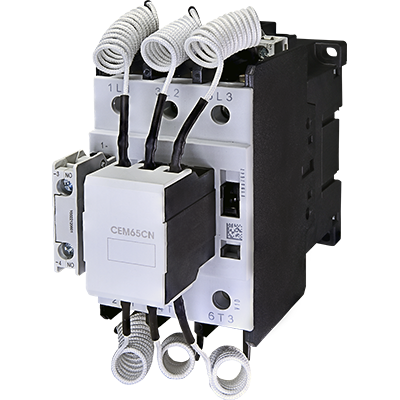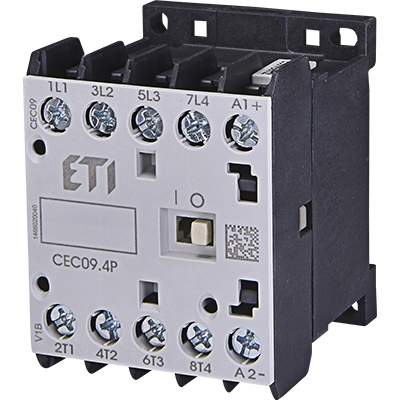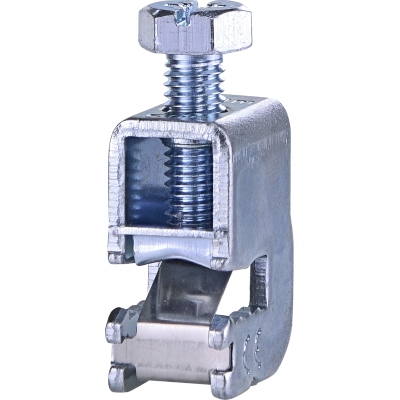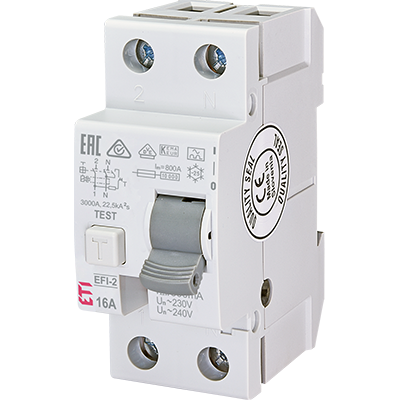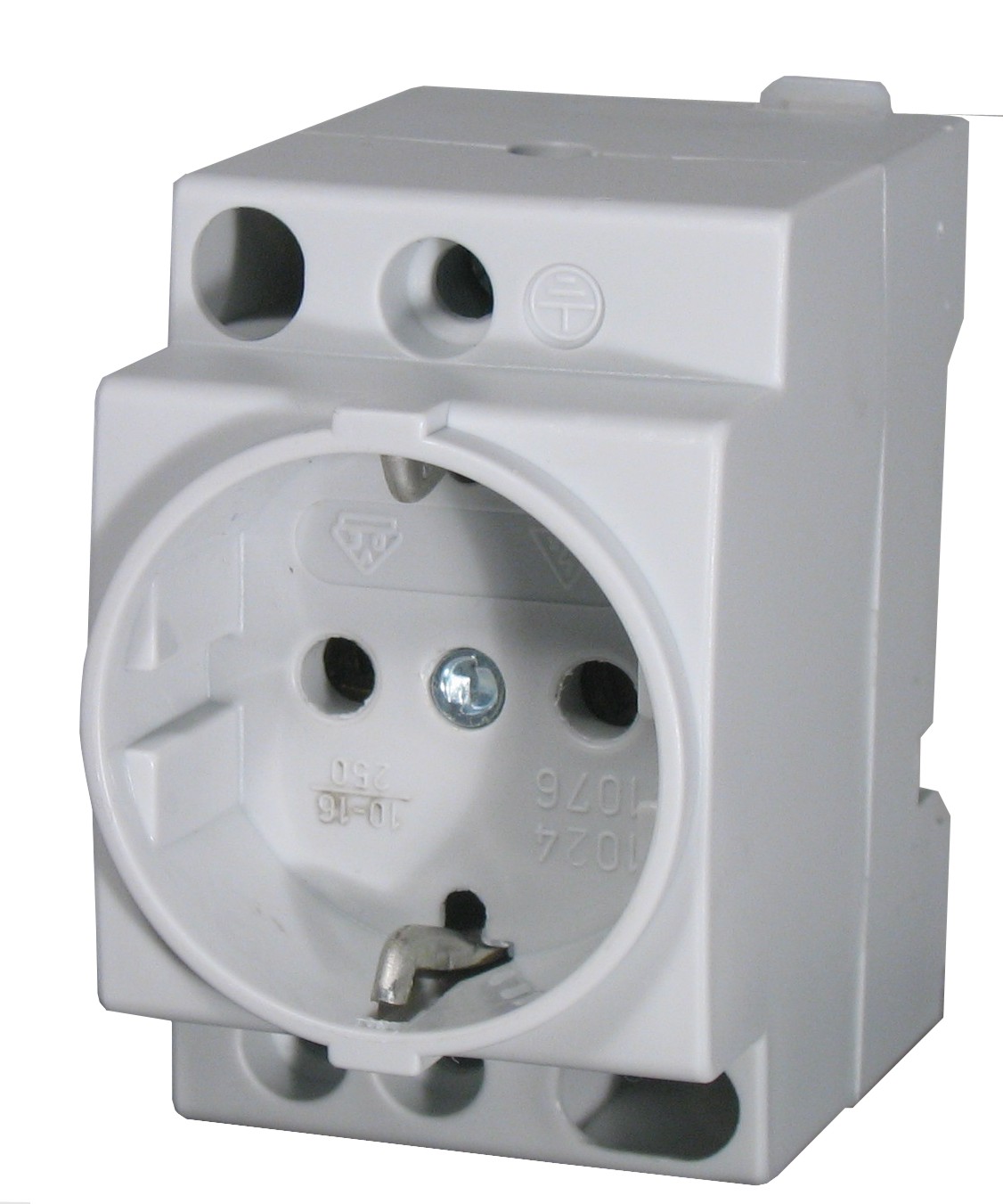Design requirements for low voltage switchgears
Low voltage switchgears are systems of one or more switches with cooperating control, signalling, protection and regulating equipment. Those systems also includes all electrical and mechanical connections as well as construction elements (enclosure).
| Michał Szulborski Product manager |
![]()
Each switchgear should ensure compatibility with the ratings of the switchgears to which it is connected or extended, etc.. The conditions for connecting and installing the switchgear should be provided by the assembly manufacturer [1, 2]. As for the rated voltage of the layout and the rated voltage of the single switchgear, those should be at least the same as the rated voltage of the power system to which those are or will be connected. The rated insulation voltage of the switchgear circuit is the voltage to which the test voltage relates and thus its values.Important parameters of switchgears are: rated current of the switchgears layout and rated current of the circuit . Rated current of the switchgears layout it is a value smaller than the sum of the input circuit currents in a parallel operating system, and also smaller than the total current that the main busbar is able to distribute in a given system configuration. This current should not cause the maximum temperature rise to be exceeded and it is the maximum load current that is distributed through the busbars and cables in the switchgear. Circuit rated current is the maximum value of the load current that a given circuit can conduct under normal operating conditions without exceeding the maximum temperature increases.
Currently, the PN-EN 61439-1 standard introduces the simultaneity factor (RDF), which is the value of the rated current in relative units. This factor multiplied by the value of the rated current of the circuit should be equal to or greater than the assumed power load in the circuits. This factor is used when a given switchgear operates loaded with rated current [1, 2, 3]. Switchgears must be adapted to work with a specific rated frequency. That frequency value is characterizing the correct operation of the connected switchgear. Occasionally, the circuits of the system are designed for different voltage frequency values, which makes it necessary to provide the rated frequency for each circuit. The PN-EN 61439-1 standard recommends that the frequency values should be within certain limits, which range from 98% to 102%, unless the manufacturer of the switchgears layout has specified otherwise.
General requirements for switchgear construction
Low voltage switchgears must be constructed of materials that can withstand the mechanical, thermal, electrical and environmental stresses that sometimes occur under certain conditions of use. Switchgears can have various external dimensions depending on the requirements and application.
Excessive heat and fire should not have a negative impact on the elements made of insulating materials, which are often subjected to thermal energy in switchgears resulting from electrical phenomena. Damage or melting of the busbar insulator under the influence of high temperature can lead to a short circuit, which often destroys the entire switchgear assembly. Therefore, the material of the insulators in the switchgear should be resistant to heat and fire. Resistance to these conditions is tested by the glow wire method in accordance with IEC 60695-2-11.
Requirements as to mechanical strength are imposed not only on the enclosures, but also on all barriers, supports, hinges and locks, which should have adequate mechanical strength to withstand the stresses arising during normal operation of the switchgear and during a short circuit conditions [1].
Installed apparatuses and devices inside the switchgear are arranged so as to provide access and maintenance for the switchgear service, but also to maintain appropriate distances between the equipment. Each switchgear should provide a specific level of basic protection intended to protect against direct contact with active elements. This is achieved by an appropriately designed enclosure structure as well as by additional measures that are taken during the installation of the switchgear.
All live parts in the switchgear that are subject to basic protection should be completely insulated. This insulation (air insulation, covers, partitions and surface insulation provided by non-conductive materials) can only be removed by using an appropriate tool. The insulation should have appropriate parameters that allow it to withstand the mechanical, electrical and thermal stresses to which it is subjected during the operation of the switchgear.
Active parts insulated by air should be placed behind protective covers that ensure the IP protection level (system, code for marking the protection provided by access to hazardous parts, ingress of foreign solids, ingress of water and providing additional information related to such protection) not lower than IPXXB. Each cover should be installed in the switchgear in such a way as to ensure the required degree of protection and separation from the active elements of the switchgear under normal operating conditions. Protective covers should meet three conditions enabling its removal from the switchboard:
- use of a wrench or other tool allowing to remove the cover;
- after disconnecting the power supply to the active elements, the restoration of the power supply is possible only when the cover is dismantled;
- when the cover provides protection of level not lower than IPXXB against contact with active elements.
![]()
Fig. 1. Current paths in the switchgear located behind protective covers that provide adequate protection against contact with live parts (design made in Solid Edge 2021)
All conductive parts of the switchgear are connected with each other by wires to ensure continuity of the protective earthing in case of damage inside the switchgear. These connections can also be made using metal bolts or by welding. From the elements covered with a protective coating, the covering should be removed or punctured in a given place to ensure the continuity of the circuit (e.g. on painted metal cable glands, screwed painted covers, etc.) - this is precisely described in point 8.4.3.2.2 of the standard PN-EN 61439-1.
If the devices exceed the limits of low voltage range, wire connections are used while mounted on doors or covers to ensure continuity of the earthing. The cross-section of the cable installed on the door or the enclosure of the apparatus should depend on the maximum rated operational current. The protective conductor in switchgears should be designed in such a way that it is able to withstand the highest dynamic and thermal loads. It is not allowed to install switch or disconnector in the protective conductor circuit, only the paths of protective conductors may use short-circuiting devices that can only be removed with a tool by authorized personnel. If the enclosure has a PEN conductor, the following requirements must be met:
- the minimum cross-section of this wire for copper should be 10 , and for aluminium - 16 ,
- the cross-section of this wire should not be lesser than the neutral wire,
- it is allowed for mounting rails made of copper or aluminium to be used as PEN wires,
- structural components should not be used as a PEN wires,
- PEN wires are not required to be insulated inside the switchboard.
Switchgears also separate individual electrical circuits to prevent electric shock due to contact with the available conductive parts, which may become live due to basic insulation damage.Busbars of the main circuits in switchgears are arranged so as to meet all the requirements related to the distances between busbars of the current path, between rails and structural elements, so that there is no short circuit inside the switchgear after its start-up. These busbars should be selected in such a way as to be compatible with the declared short-circuit strength and made in such a way as to be able to withstand the short-circuit exposures limited by the protection from the supply side of the busbars. Distribution cables or busbars within one segment between the main busbars and the load side can be selected according to the reduced short-circuit strength of the protective device.Auxiliary circuits in switchgears are designed so that there is no uncontrolled incident (e.g. short circuit). The auxiliary circuits should be routed in such a way that a short circuit is unlikely to occur.
The cables used to connect devices in the switchgear should not deteriorate their insulation parameters (insulation ageing) as a result of normal temperature increase and vibrations occurring during normal switchgear operation. Particularly important are the effects of thermal expansion due to the achieved operating temperatures of the wires. In addition to the conductivity, cables are selected due to:
- mechanical stresses that may occur in the switchgear,
- securing and routing wires,
- type of insulation and material that it is made of,
- used switchgear and switching devices.
Both in the case of rigid and flexible insulated conductors, intermediate joints should not be used especially by using couplings or soldered connections. Additionally, the cables should be protected against rubbing against sharp edges of structural elements, e.g. by using cable trays. If the devices used are installed on movable covers or switchgear doors, the connecting wires are placed in special flexible protective tubes, which protect those from rubbing against the door or the switchgear enclosure.
![]()
Fig. 2. An example of the configuration of the assembly insert and the arrangement of wires and busbars in the low voltage switchgear (project made in Solid Edge 2021 software)
Surface and air gaps of switchgear structure elements and dielectric properties testing
Concerning switchgears construction and design, special attention is paid to maintaining appropriate insulation gaps, both air and surface. These requirements are described in detail in the standard IEC 60664-1. Clearances should be kept so that the installation of apparatus and other devices in the switchgear does not affect the specified insulation distances. In cases where separate circuits are provided in the switchgear, the impulse withstand voltages for air and surface insulation distances between these circuits must be taken into account. For busbars, connections between devices and cable terminals, i.e. all non-insulated elements, at least the same insulation distances as have been provided for the devices with which they are connected are used. It is assumed that the short circuit between the busbars should not permanently reduce the provided insulation distances. In order to increase the insulating gaps, special convex grooves are used in the insulating elements, which significantly increase the surface and air insulating distances [1, 2, 3]. In the case of concave furrows, only the superficial insulation distance increases.The dielectric properties of low voltage switchgear structures are verified in accordance with the requirements of the PN-EN 61439-1 standard, which precisely describes how dielectric strength measurements should be done.The enclosure and structure elements are tested with the withstand voltage of the mains frequency; where the main, control and auxiliary circuits are tested with the test voltage values which have been specified in the standard . There are given the exact values of AC and DC test voltages depending on the rated insulation voltage.
In the case of testing the main circuits with alternating voltage - five test voltage values are given: 1000 V, 1500 V, 1890 V, 2000 V and 2200 V. However, for the measurement with direct voltage, six values were determined: 1415 V, 2120 V, 2670 V, 2830 V, 3110 V and 3820 V. During tests of control and auxiliary circuits, the test voltage used depends on the rated insulation voltage. In circuits with voltage over 60 V, the additionally entered test voltage values are used, which are equal to 250 V and 500 V.The shape of the test voltage should be sinusoidal with a frequency of 45 - 65 Hz. On the other hand, the output current at the shorted device terminals during the measurement should have a value of not less than 200 mA.
When the test voltage is applied at the mains frequency, its value generally does not exceed 50% of that voltage. It is gradually raised to full voltage and maintained throughout the test run. All active parts of the main circuit with available conductive elements as well as active parts with different potentials or between the main circuit, auxiliary and control circuits are tested.
When testing the structure, with the impulse withstand voltage, the voltage of 1.2/50 μs is applied five times for each polarization at 1-second intervals. If no discharge occurs during the test, the test is considered positive.In the case of product verification, i.e. the finished manufactured switchgear, it is tested for dielectric strength with mains frequency voltage. The idea of the test is almost the same as in the case of testing the structure, except that in this scenario the voltage is applied only for 1 second. The test is omitted for auxiliary circuits protected with overcurrent protection, the rated current of which does not exceed 16 A, or when the functional test was performed at the construction testing stage with the switching voltage provided for in the design for these circuits.
When overcurrent protections with a rated current up to 250 A are installed in the tested circuit, the insulation resistance value is measured with a voltage of not less than 500 V DC. If the value of the insulation resistance between the conductive parts and the circuits is not less than 1 kΩ/V, the test is passed.
Influence of electrodynamic forces on current paths and supporting structures of low voltage switchgears
During the flow of electric current through the current paths and switchgear cables, electrodynamic forces arise, which generate stresses on the supporting insulators of the current paths, cable fasteners, supports etc. [3, 6, 7].
Electrodynamic forces arise between:
- current paths,
- power cables,
- ferromagnetic materials and wires or busbars,
- boundary surfaces of materials with different magnetic permeability.
In order to determine the moments and electrodynamic forces acting on the current paths, the Biot-Savart, Lorentz and Maxwell equations are used. The Maxwell equations are used to calculate electrodynamic forces in current path systems for which analytical expressions of inductance are known. Generally, the Lorentz and Biot Savart equations are used to calculate the moments and electrodynamic forces that act on rectilinear portions of current paths.
When designing switchgear current paths, pay attention and make the necessary calculations related to:
- stresses arising in current paths at the moment of the flow of short-circuit currents, which will allow for appropriate selection of busbars cross-sections, length of spans and correct fixing of current paths,
- reaction forces acting on the fastening elements and other supports with which the current paths are fixed, this allows for the selection of an appropriate insulator with the required strength and the number of these elements,
- moments affecting the connection of the busbars during the flow of short-circuit currents,
- the forces acting on the electric arc.
An important phenomenon is the interaction of the conductor with the current on the vicinity of ferromagnetic masses. When direct or alternating current flows near a structure or plate made of a ferromagnetic material, it causes a distortion of the magnetic field around the conductor through which the current flows. The electrodynamic force directed towards the ferromagnetic element in this case is the result of the asymmetric field with respect to the axis of the conductor.
This force is described by the formula according to the mirror image method:
![]()
C - constant assumed depending on the length and shape of the conduit,
i – circuit current,
i_1- mirror reflection current,
a - distance from the plate surface to the conductor axis.
![]()
Fig. 4. The effect of attracting the conductor with the current to the ferromagnetic plate: a) distribution of the magnetic field lines, b) calculation example according to the mirror reflection method.
The build-up of electrodynamic forces due to attraction is a dangerous occurrence during short-circuits when the wires/busbars are laid close to a steel plate or other support structures with sharp (non-deburred) edges. Then, there is a risk of breaking the wire insulation, soft due to the influence of temperature, rubbing against the plate or other structural part of the enclosure under the influence of electrodynamic forces, which may lead to a short circuit of the metallic wire with a given element.
Maximum power losses of low voltage switchgears
Manufactured low voltage switchgears are subjected to examinations and tests aimed at determining the maximum power losses. This is due to the introduction of the IEC 61439 standard. The standard describes in detail the tests to be performed to obtain the required data. One of the specific tests in point 10.10 of the Polish standard PN-EN 61439-1 is the verification of the thermal load. The test consists in providing the maximum allowable temperature rise in spots where the critical value of the temperature rise may be exceeded. It is verified which compartment of the enclosure for testing is the most unfavorable (due to the size, shape, number of partitions and whether it is ventilated or not).
During the test, the maximum rated current depends on the number of devices in the function block. If there is only one device, the rated current of the device is applied, if there are several devices in the function block, then the current of the device with the lowest rated current is applied.
According to the recommendations of the standard, the most unfavorable variants should always be investigated. The critical functional block shall be tested:
- inside the (smallest) compartment intended for the function block,
- due to the worst option of internal separation, referring to the size of ventilation openings,
- if it occurs in the enclosure with the highest installed loss power per volume unit,
- in the worst case ventilation variant, taking into account the type of ventilation - forced or convection.
The tests are performed as if the switchgear was used in normal conditions, with all covers and panels installed. In individual enclosures, the temperature test is performed with the type of current for which it was designed. The test is being executed until the temperature value becomes a constant. During the tests, this value is reached if the temperature rise at all measuring points does not exceed 1 K/h.
While performing the test for the power loss of the switchgear enclosure, the generation of heat by the current paths and the installed devices is simulated using heating resistors appropriately positioned inside the enclosure. These resistors are set to give the heat value equivalent to the expected power loss in the enclosure under normal conditions provided by the manufacturer [1, 2]. The cables supplying the heating resistors are selected so as not to remove heat from the tested enclosure. The temperature values in the enclosure are measured in its upper part, where its value is the highest, because warm air rises upwards by convection. The temperature of the enclosure cannot exceed the values given in the PN-EN 61439 standard.
The conducted test is verified at the time of its performance and after its completion. If the air temperature from the calculated power loss (obtained during the test) is not greater than the permissible operating temperature declared by the manufacturer, it means that for internal fittings and main circuit connectors, the continuous load is not greater than the allowable load at the calculated air temperature. In this case, the continuous load does not exceed 80% of the rated current, which means compliance with the manufacturer's declaration.
Electromagnetic compatibility of low voltage switchgears
The standard PN-EN 61439-1 (point 9.4 and Annex J) states that the switchgears should meet the guidelines for electromagnetic compatibility (EMC). It is the ability of the switchgear to operate in a specific electromagnetic environment and not to generate electromagnetic field disturbances that could interfere with the proper operation of other devices functioning in its vicinity. EMC testing is mandatory at most markets in Europe, the United States and other countries. This makes it necessary to carry out these tests in order to introduce a given product to the market and meet all legal requirements in order to enable the sales.
![]()
Fig. 5. Room for testing electromagnetic compatibility EMC.
When preparing the switchgear for testing, generally an assembled sample is prepared at one time, and the combination of devices installed inside is rather random.EMC immunity or emission tests are not required if the installed switchgear components and electrical apparatus comply with the requirements of electromagnetic compatibility standards for a given environment, in accordance with specific product requirements or the general EMC standard.
The sources of electromagnetic interference may be:
- discrete continuous or variable (sinusoidal) signals from, for example, ubiquitous radio transmitters,
- broadband continuous signals generated by overhead lines, electrical machines or thyristor rectifying systems,
- one-time transient surge signals from lightning, electrostatic discharges, switching processes, spark discharges and short circuits.
All these disturbances cause the appearance of transient overvoltages which expose the devices installed in the switchgear to the breakdown of insulation and disrupt the measurement and control functions. An additional problem is the resistance of the apparatus and transformer windings to short-term over voltages with nanosecond slope rise times.
The coupling of the disturbing quantity with the given circuits in the switchgear can be achieved through the distortions:
- inductive,
- galvanic,
- capacitive,
In order to reduce the coupling between the disturbing signal, the switchgear is equipped with:
- surge arresters for overvoltage protection,
- screening of control cables (with screen earthing on both sides),
- network filters,
- fiber optic connections between control devices.
![]()
Fig. 6. Examples of couplings at the moment of the disturbance occurrence: a) galvanic, b) capacitive, c) inductive, d) electrostatic discharge.
Obtaining the required degree of electromagnetic compatibility (EMC) of a switchgear requires appropriate actions in phases from the concept to the prototype. For this purpose, a number of computer programs are used, as well as the application of the recommendations contained in standardization regulations and the experiences of manufacturers.
Summary
The manuscript presents and discusses the design requirements for low voltage switchgears contained in the PN-EN 61439-1 and PN-EN 62208 standards, which must be met by switchgears manufactured on the market.
Verification of the developed switchgear structures by the manufacturer during construction tests and type tests in research laboratories allows the market and sales of modern high-quality solutions that ensure an appropriate degree of protection and safety during their operation.

